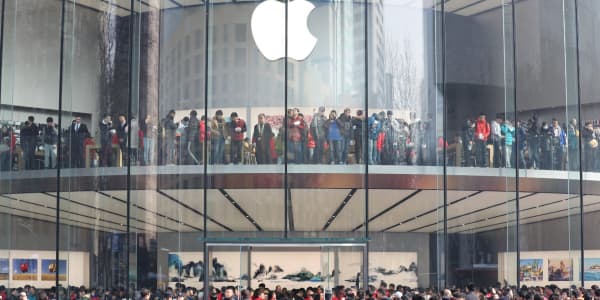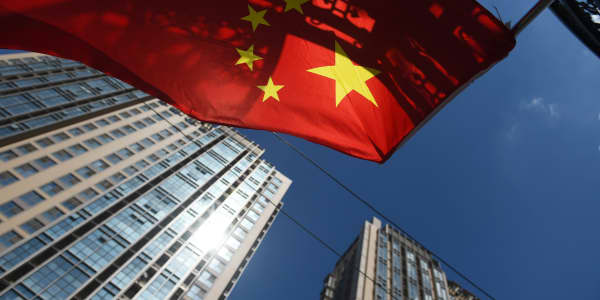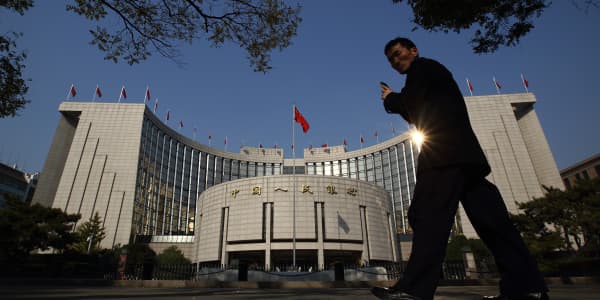China's ascent to the top of the global economy is not a certainty. Many hidden structural dangers exist that could derail its growth, not least of which is the question whether China will be able to move from an export-led economic model to one built on domestic consumption.
Among the most important factors that could limit China's ability to make this transition is the state of its healthcare system. Beijing understands healthcare is a major problem that stands in the way of its goal to create a significant consumer economy.
(Read More: Before People's Congress in China, Vows of Change and Raised Hopes)
This realization explains the central government's massive 2009 investment of yuan 1.13 trillion into the country's healthcare system as well as the subsequent 12th Five Year Plan that specified an additional yuan 4.4 trillion of spending.
Among the most impressive achievements from these two rounds of investments is that now over 95 percent of all Chinese receive some level of basic healthcare insurance provided by the government. China's leaders hope that as healthcare access and affordability improve, Chinese citizens will save less and spend more.
Chinese households have one of the highest personal savings rates in the world, estimated at 38 percent of their disposable income in 2012. This high level of savings has stunted domestic consumption. When compared to other countries at similar gross domestic product (GDP) levels, China's household consumption is markedly lower.
In September 2012, the IMF published a study which not only reinforced the point that China's consumption continues to lag other developing economies, but also that China's domestic consumption was noticeably less than other regional economies such as South Korea and Japan during what the IMF called their "miracle growth years."
(Read More: China's Planners Push Urbanization as Main Growth Driver)
What explains the difficulty China is having developing a consumption-based economy? Simply put: fear. China's personal savings reflect profound misgivings over the ability of the Chinese government to provide basic healthcare in the event of a healthcare crisis. The recent expansion of government sponsored healthcare insurance is specifically designed to address these fears.
Between 1980 and 2002, the Chinese government's spending on healthcare actually decreased when measured as a percentage of GDP. During the same period, healthcare outcomes in China did not keep pace with other developing economies such as Mexico. Last year, the Pew Global Attitudes Project found that between 2008 and 2012, Chinese anxieties over the country's healthcare system had more than doubled. Problems related to affordability and access remains acute in rural areas particularly.
The WHO has estimated that 50 percent of China's rural poor find themselves in "entrenched poverty" due to healthcare costs. In 2000, the WHO ranked China 188 of 191 countries globally regarding "fairness of healthcare finance."
(Read More: China's Monetary Policy Baffles Investors)
Among the unforeseen negative consequences of China's economic reforms was the dismantling of what had been called the "iron rice bowl." This essentially guaranteed healthcare insurance and pensions from the government if you worked at a State Owned Enterprise (SOE).
As large parts of Chinese industry were shut down or privatized, the iron rice bowl was not replaced by similar investments from the private sector. Since the '80s, the Chinese government has been understandably fixated on modernizing its economy.
In the short term these efforts required painful adjustments like the loss of government sponsored healthcare and pensions. The hope was that in the long term, private enterprise would augment what government could not afford to provide. The painful reality is that neither the private sector nor the Chinese government filled in the gap after the iron rice bowl was shattered.
(Read More: China February HSBC Services PMI Falls From 4-Month Highs)
Lacking either private or public healthcare insurance, by 2000 the average Chinese was paying 69 percent of their medical costs out of pocket. To the central government's great credit, as of 2010 that number had shrunk to 35.5 percent, largely a reflection of the massive expansion of the government's public insurance.
These are welcome changes, but they are not enough. If China is going to develop a vibrant middle class and a consumption based economy, more will have to be done. The existing public insurance scheme will need to cover more, including doing a much better job protecting families against catastrophic illness and chronic diseases such as cancer, cardiovascular conditions, diabetes and hypertension.
Given China's polluted air, water and land alongside its 350 million smokers and the inevitable medical problems related to western diets, the demands on China's healthcare system are only going to increase.
(Watch: Inside China on CNBC TV)
Benjamin Shobert is the Founder and Managing Director of Rubicon Strategy Group (www.RubiconStrategyGroup.com), a consulting firm that provides market access strategy for healthcare companies entering emerging economies.




